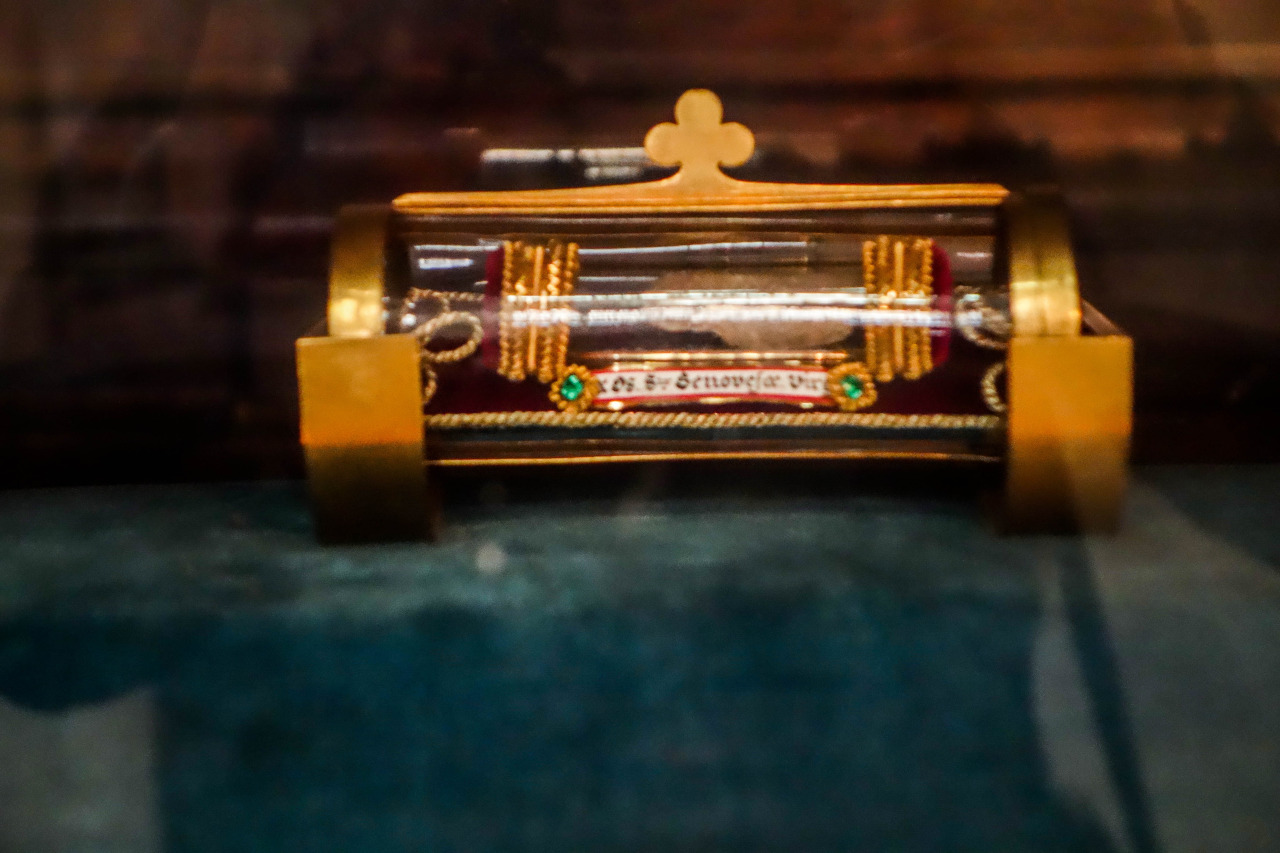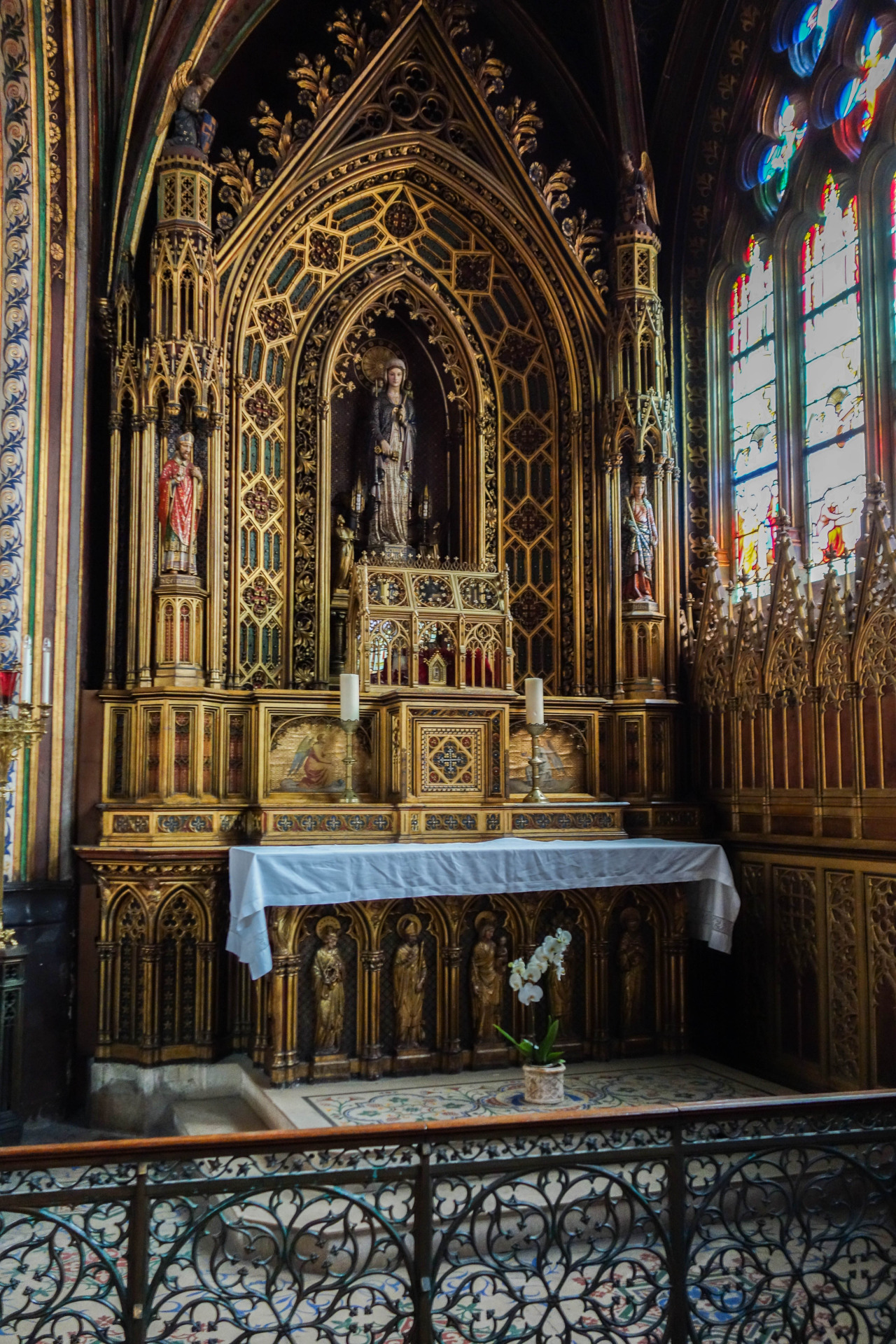The Saint and The Satanist
Lately I’ve been particularly interested in female saints from the Middle Ages. These women were looking for a way to be both holy and female during a time when the female body was assumed to be an inherent source of evil. So to express their religiosity, they brought their (presumably sinful) bodies to the brink of death, without stepping over the line and committing suicide. They talked directly to God through mystical experiences because they were cloistered away from the majority of church functions. Without a way to participate in their religion, they devised a path to holiness that was completely contained within themselves.
But it wasn’t always like that. One of the radical tenets of the early Christian church was the inclusion of women and that sentiment carried through early Catholicism. Before the Carolingian rulers imposed stricter regulations on religious orders, holy women were expected to have a public role. They could take on high-profile leadership positions in their communities and even operate as international diplomats, petitioning kings for peace. This is the world of St. Genevieve, who was born some time around 420.
St. Genevieve is the patroness of Paris. Her image is a bit less striking than the decapitated patron St. Denis, but if you look for her, you’ll find her in the architecture and stained glass of the city as well. And who better to represent Paris? You can learn an incredible amount about the history of the city just by following her life and relics.
Genevieve spent most of her life as a nun in Paris. She took at active role around the city to decidedly mixed results at first. Some thought she was a saint, others a bit of a nut (or even wanted her killed, which is what you did with nutty women back in the day). All this changed when Attila and his Huns began marching straight for Paris. People panicked and threatened to flee but Genevieve convinced them to stay and pray. Miraculously, Attila took a turn for Orléans. (To their credit, the people of Orléans don’t seem to hold this against Genevieve.) Later, she took an even more active role- passing through enemy lines during a siege to deliver food and successfully bargaining with kings to show mercy and release prisoners of war.
After her death she was buried in the abbey Clovis built for her in Paris. From there, like the bodies of most saints, she certainly stayed active. In 847 the Vikings sacked her abbey, which was rebuilt in 1177 after her relics stopped a plague of ergot poisoning in 1129. In 1222, the pope decided that the abbey was too small to accommodate all the pilgrims and the site required a full church. Work began on St. Ètienne-du-Mont, the future home of St. Genevieve’s relics, though originally named for and dedicated to St. Stephen. With the establishment of the Sorbonne nearby in 1257, the population in the Latin Quarter grew rapidly, so they just kept adding on to the church. It was finally completed in 1537.
Skip to 1744 when Louis XV becomes seriously ill during the War of Austrian Succession. He vows that if he recovers, he’ll build a church worthy of the patroness of Paris to replace her original abbey (which by now is falling apart). He recovers and makes good on his promise. Work begins on a building just across the street from St. Ètienne-du-Mont- the building that’s now known as the Pantheon. The grand church is completed in 1790, just in time for the French Revolution. The following year it secularizes, as does St. Ètienne-du-Mont, which becomes the Temple of Filial Piety. In 1793 St. Genevieve’s relics are publically burnt at the Place de Grève. By 1801 St. Ètienne-du-Mont is restored to the Catholic Church. What’s left of St. Genevieve’s relics, some dust and the stone her coffin rested on, are enshrined in their current location there. The Pantheon flips back and forth between the church and state a few more times before finally settling as a secular crypt for French luminaries in 1885.
Both buildings are worth visiting today. Over at the Pantheon you can see the tombs of Voltaire, Rousseau, Zola, Hugo, Monnet, Dumas and the Curies (just to name a few) as well as an exact replica of Foucault’s pendulum. Across the street at St. Ètienne-du-Mont, you can visit the remaining relics of St. Genevieve as well as the tombs of Pascal and Racine. When you walk in, the fist thing you’ll notice is the magnificent double spiral staircase carved in stone. This architectural feature is called a jubé and it’s the very last of its kind in Paris.
There’s one additional bit of lore about St. Ètienne-du-Mont that you won’t find in the guidebooks but it’s too good to overlook. On January 3rd, 1857, the Archbishop of Paris, Marie Dominique Auguste Sibour, was assassinated here.
Three years earlier, Pope Pius IX issued a papal bull that formally defined the Church’s views on the Immaculate Conception. Archbishop Sibour upheld the bull and promoted it in Paris. A ne’er-do-well priest named Jean-Louis Verger saw this as the Archbishop promoting idolatry and stabbed him to death as he lead a novena to St. Genevieve. Verger shouted, “Down with the Goddess!” as he killed the Archbishop, a possible reference to both the saint and his stance on the Immaculate Conception.
A former seminarian at St. Sulpice known as Eliphas Lévi supposedly witnessed the bloody incident; though it’s anyone’s guess what brought him to the church that day (or if he was telling the truth about being there in the first place). He had become a well-known Occultist after leaving the seminary. He later reported that Verger approached him before the assassination and asked for a book of spells called Honorius. There, Verger believed he would find a spell powerful enough to conjure the devil. Lévi said he refused.
Verger, for his part, freely admitted to murdering the archbishop and believed he would not be found guilty. He was, in fact, found guilty the very day of his trial. Ever confident, he was certain the Emperor Napoleon III would pardon him. He didn’t and Verger was dead by the end of the month.



